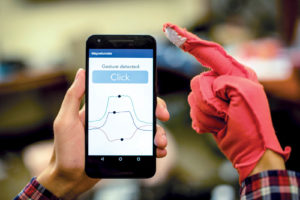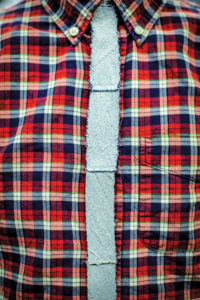
One day soon, the most sought-after feature in a new jacket may not be the style, color or its ability to keep you warm—it may be the garment’s unique capability to store information.
Researchers at the University of Washington are using off-the-shelf conductive thread to create fabrics and fashion accessories that can store data from security codes to identification tags—no embedded electronics or sensors needed. The key is the magnetic property of the thread: It can be manipulated to store either digital data or visual information like letters or numbers. The data is easily accessed by a magnetometer, an instrument embedded in smartphones that enables navigation apps.
In one test, the research team stored the passcode to an electronic door lock on magnetized fabric sewn to a shirt cuff. All they had to do was wave the cuff in front of an array of magnetometers and they unlocked the door. In another, they demonstrated that the conductive fabric could interact with a smartphone while in the wearer’s pocket—no need to take it out. Using a glove with conductive fabric sewn into the fingertips, wearers gestured at the smartphone. Each gesture yielded a different magnetic signal that could invoke specific actions, such as pausing or playing music.
Unlike smart fabrics that require electronics or sensors to be sewn in, this fabric can withstand rain and other moisture. It can also be thrown in the washer or dryer, and even ironed.
The magnetic signal weakens in strength by about 30 percent over the course of a week; however, the fabric can be re-magnetized and re-programmed multiple times. The research team is now looking at developing custom textiles that generate stronger magnetic fields and are capable of storing more data. For more information, visit www.washington.edu.
 TEXTILES.ORG
TEXTILES.ORG



